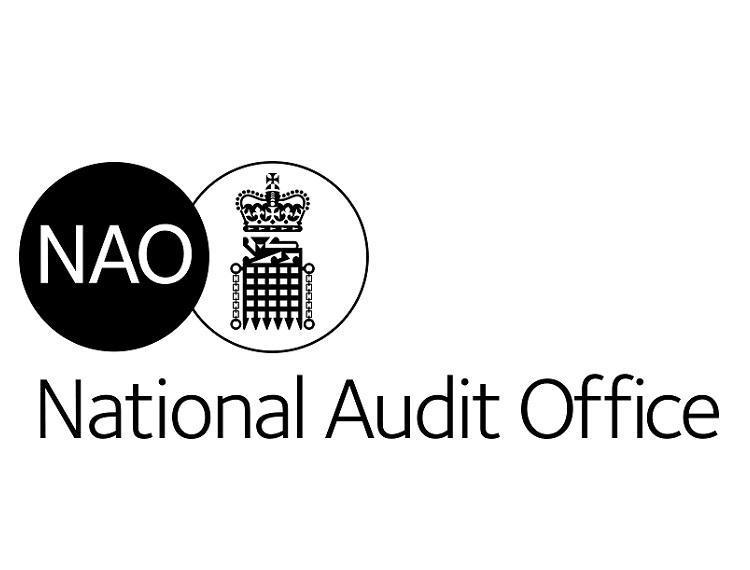Ofsted cannot demonstrate that its inspections represents value for money

Ofsted provides valuable independent assurance about schools’ effectiveness but it has faced significant financial and staffing challenges in recent years and has struggled to meet its inspection targets, says today’s report by the National Audit Office (NAO).
Ofsted’s remit has expanded significantly since 2000 but its spending has fallen in real terms since 2005-06. Spending on inspecting the schools sector was 52% less in real terms in 2017-18 than in 1999-2000. In 2017-18, Ofsted spent £44 million on inspecting state-funded schools. Ofsted does not have reliable data on the efficiency of its state-funded school inspections over time. In 2017-18, the only year for which the calculation was possible, the NAO estimates that the average total cost per state-funded school inspection was £7,200.
The NAO found that Ofsted did not meet its statutory target to re-inspect schools within five years in 43 (0.2%) cases between 2012/13 and 2016/17. In March 2018, in light of the NAO’s analysis, HM Chief Inspector informed the Secretary of State that Ofsted had not met its statutory target because it had incorrectly categorised 32 schools as new where they had expanded or amalgamated with another school; in the 11 other cases, Ofsted had deferred inspections for exceptional circumstances.
Ofsted has struggled to achieve its own targets for how often schools should be inspected. For example, between 2012/13 and 2016/17, it did not meet its target to re-inspect schools graded as inadequate, where the quality of education provision is most at risk, in 78 cases (6%). Ofsted has extended some of the targets to allow schools more time to improve. This has also allowed Ofsted to spread re-inspections over a longer period. For example, it now aims to re-inspect schools graded as requires improvement within 30 months when, prior to September 2015, it was within two years. Ofsted’s performance against its targets has improved since it has deployed more inspectors. In 2017-18, it completed 94% of planned inspections, compared with 65% in 2015-16.
Ofsted has found it difficult to meet its inspection targets because it has not had enough inspectors. In 2015, it brought all inspection work in-house with the aim of improving quality. This left it with a shortfall of contracted inspectors although this improved in 2016/17. Ofsted has also employed fewer permanent HM inspectors than it budgeted for and, while turnover of HM inspectors has improved, it remains high (19% in 2017-18). One of the main reasons that HM inspectors give for leaving is workload, with some also dissatisfied that short inspections have made their role narrower, with less opportunity for improvement work with schools.
In response to the NAO’s survey, 84% of headteachers whose schools had been inspected since September 2015 said that the outcome of the inspection was fair. Ofsted has a range of processes to assure the quality of its inspectors, inspections and inspection reports. Its data relating to three of the processes show that, between 2015/16 and 2017/18, over 90% of inspections were assessed as meeting requirements.
Ofsted does not know whether its school inspections are having the intended impact: to raise the standards of education and improve the quality of children’s and young people’s lives. As Ofsted is only one player in the system, assessing the impact of school inspections is not straightforward. However, Ofsted set few targets to measure performance against its 2016 strategic plan and has provided limited information to allow others to assess its progress. In March 2018, it agreed an evaluation framework for assessing performance against its new strategy, including performance indicators and targets.
There is some evidence that inspections are helping schools to improve. In response to the NAO’s survey, 44% of headteachers said that the inspection had led to improvements in the school, while 28% said that it had not. In addition, 71% of respondents agreed that inspectors provided useful feedback during and at the end of the inspection visit.
Ofsted’s inspection reports are an important factor when parents choose a school for their children – the second most important factor (50%), after proximity to home (61%), according to Ofsted’s 2017 survey of parents. Ofsted’s research suggests parents would like inspection reports to reflect parents’ views more. Ofsted seeks parents’ views through an online survey but the response rate is low.
As a result of decisions by the Department and Ofsted, the level of independent assurance about schools’ effectiveness has reduced. Under legislation, schools graded as outstanding are exempt from routine re-inspection. At August 2017, 1,620 schools had not been inspected for six years or more, including 296 schools that had not been inspected for 10 years or more. Ofsted re-inspects good schools through a short, one-day, inspection rather than a full, two-day, inspection. Short inspections provide less assurance and allow inspectors less time to discuss with schools how they might improve.
Overall the NAO concludes that Ofsted cannot demonstrate that its inspection of schools represents value for money. The NAO’s recommendations for Ofsted include: monitoring and reporting publicly on the extent to which it is meeting targets for both processes and impact; identifying how it can engage more with parents and make inspection reports more useful for parents; and setting out a plan for recruiting and retaining the inspectors it needs to undertake school inspections.
Amyas Morse, the head of the NAO, said:
“Ofsted’s role as an independent inspector is valued by parents, headteachers think its judgements are fair, and it is making headway against recent performance shortfalls. However, it needs better information to be able to demonstrate that its inspection of schools represents value for money.
“The fact that Ofsted has been subject to constant cuts over more than a decade, and regular shifts in focus, speaks volumes. It indicates a lack of clarity about how best to obtain assurance about the quality of schools. The Department needs to be mindful that cheaper inspection is not necessarily better inspection. To demonstrate its commitment, the Department needs a clear vision for school inspection and to resource it accordingly.”
Meg Hillier MP, Chair of the Committee of Public Accounts, said:
“Ofsted plays a crucial role in ensuring pupils receive high quality education.
“Over the past decade, successive governments have asked Ofsted to do more with less. The Department for Education needs to clearly articulate Ofsted’s role and explain how it fits with the various other bodies which monitor schools.”
 Dr Mary Bousted, joint general secretary of the National Education Union, said:
Dr Mary Bousted, joint general secretary of the National Education Union, said:
“We welcome the NAO’s report on Ofsted’s inspection of schools; it is both vital and timely. Ministers can’t ignore this report and the time for root and branch reform of Ofsted is now.
“The revelation that Ofsted does not know whether its school inspections are having the intended impact to raise the standards of education and improve the quality of children and young peoples’ lives is devastating. It confirms the NEU’s view that Ofsted is not fit for purpose and that we need a root and branch review and overhaul of the system for holding schools to account for their quality of education.
“The NAO has also provided further evidence that there are conflicts of interest, and duplication of role, between Ofsted and the Regional School Commissioners. We welcome that the Department for Education will consult on this issue in the autumn – better late than never.
“It is important that the NAO has identified that the messages about the Ofsted ‘Myth-busters’ have not filtered down, in many cases, to teachers. Ofsted has produced a compliance culture: school leaders feel constrained to provide what they think inspectors will want before considering what is best for pupils and learning. At the same time teachers comply with instructions from leadership and too often do not feel suitably empowered to exercise their own professional judgement.
“Neither Ofsted inspectors nor schools can keep pace with the frequency of change in the content and form of inspections. Ofsted should have been, from the start, a supportive organisation. Clearly all schools should consider and review their practice, but the documented devastation, demotivation and poor morale left by the current Ofsted regime, ticking very narrow standards lists, has not been effective or helpful for schools and colleges.
“Crucially, the NAO has concluded that Ofsted cannot demonstrate that its inspection of schools represents value for money and the NEU supports that conclusion. Huge sums of taxpayers’ money are being spent on a system of inspection which demands high standards from schools yet cannot demonstrate the same standards itself.”
DfE spokesperson said:
“Ofsted inspections give headteachers the information they need to raise standards and there are currently 1.9 million more pupils in good or outstanding schools than in 2010, thanks to the hard work of teachers and our reforms.”
 School Standards Minister Nick Gibb said:
School Standards Minister Nick Gibb said:
“Ofsted receives more than £40m a year to provide a school inspection regime that is focused on the schools that need the most improvement. We have repeatedly made clear that we want to ensure accountability is proportionate, helps to ensure standards in our schools are high and does not distract high-performing schools from what matters most – teaching and providing an excellent education.
“If Ofsted has reason to believe a school is no longer meeting its previous high standards, we would expect it to use its powers to carry out a full inspection – this has always been the case – and remains so.”
Key facts
|
6,079 number of inspections of state-funded schools that Ofsted completed in 2017-18 |
£44m estimated amount that Ofsted spent on the 6,079 inspections of state-funded schools in 2017-18 |
166 number of school inspectors that Ofsted employed directly at March 2018 |
|
29% |
proportion of Ofsted’s total spending that went on inspecting state-funded schools in 2017-18 |
|
£7,200 |
estimated average total cost per school inspection in 2017-18 |
|
94% |
proportion of planned school inspections that Ofsted completed in 2017-18, compared with 84% in 2016-17 and 65% in 2015-16 |
|
43 (0.2%) |
number of schools for which Ofsted did not meet the statutory target to re-inspect within five years between 2012/13 and 2016/17 |
|
296 |
number of schools that had not been inspected for 10 years or more because they were previously graded as outstanding and are therefore exempt from routine re-inspection, at August 2017 |
|
9 |
average number of days that each contracted inspector who was a serving teacher was deployed in 2016/17 |
|
84% |
proportion of headteachers who responded to our survey and said that the outcome of their school’s most recent inspection was fair |
|
44% |
proportion of headteachers who responded to our survey and said that their school’s most recent inspection had led to improvements, compared with 28% who said that it had not |











Responses